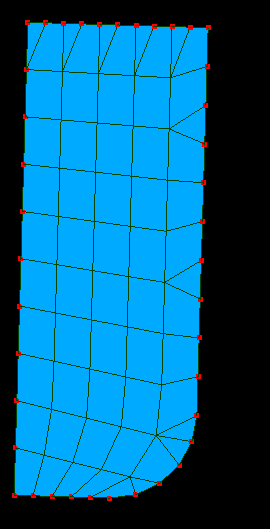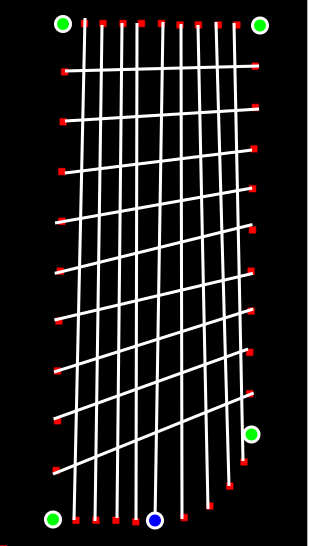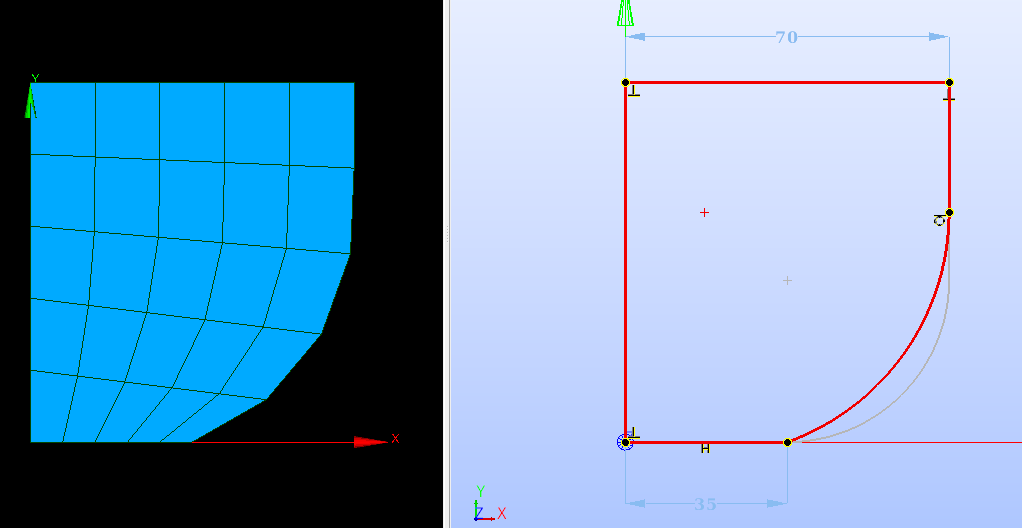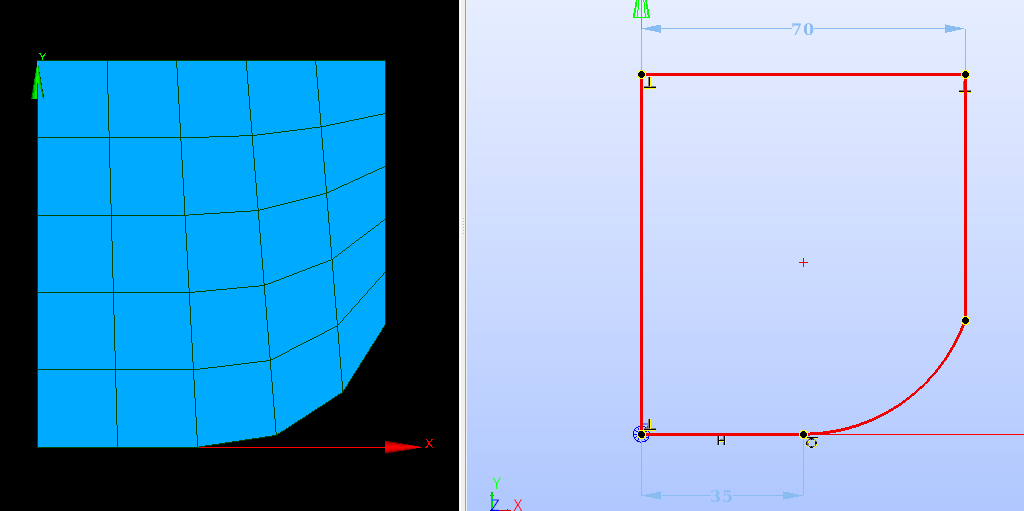Hello,
i have a geometry that is sort of a quad face, it has one extra node and vertex, as it is a quad face with a filet in a corner. I would like to know if it is possible to do some ‘trick’ to make a regular 2D mesh over the face without higher valence nodes.
the face itself:
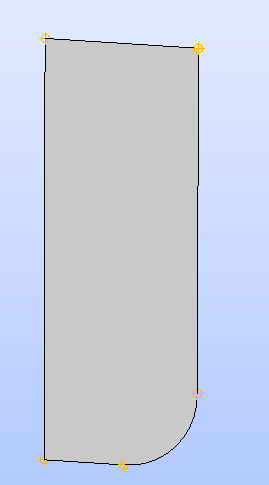
I would like to consider that the two bottom edges will have the same number of elements as the top edge (so making as the node that will be in the vertex of the fillet on the bottom part) is a simple node with a 3 valence (ie., that will have 3 edges of the mesh going out from it) and the node that will correspond to the top vertex of the fillet will be considered as the corner of the quad face, so a node that has a 2 valence (ie., that will have 2 edges going out from it).
right now the mesh when computed it looks like this:
what I would like would be something like this instead:
as it can be seen the green nodes would be the quad corners and the blue node would be ‘ignored’ and simply considered a internal node. (where right now the blue node is treated as a green node and therefore the classic structured quadangle mesh will fail adding the other elements (or higher/lower valence internal nodes))
here is the brep of the face if necessary for testers around:
Face.brep (26,7 KB)
thanks in advance.
Note about this:
there are some heuristics having an impact on salome behavior as same kind of geometry but for a more straight foward geometry such as a square with an extra vertex on an edge. this does not give any issue:
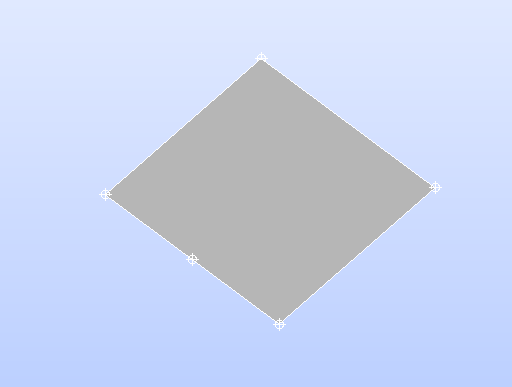
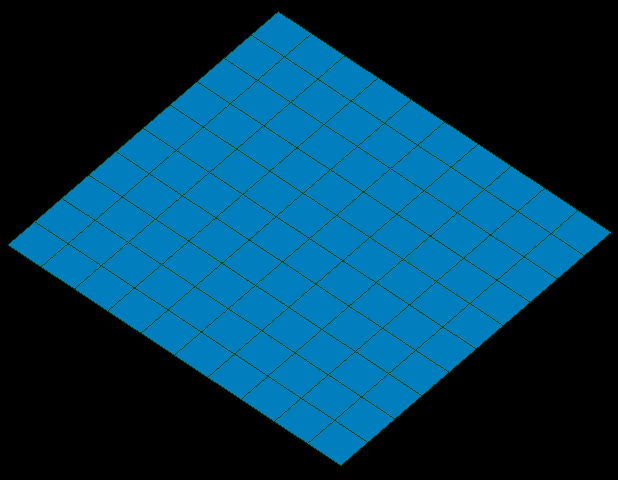
Hi Franco,
you can use Composite Side Discretisation, so that continuous edges are treated as a single edge regarding the number of segments to put on it.
But in your case, you have 3 continuous edges, so it can’t discard which two edges to treat as a single edge.
By loosening slightly the tangency, you can make Composite Side Discretion working.
or:
otherwise, you’ll have to find for your case one way to distinguish the two edges you want, to create a sub-mesh on them with nb_of_segments/2.
Study_nb_segs.hdf (242,7 Ko)
Christophe
Hello christophe,
thanks for your reply. I can efficiently ‘separate’ the three edges into two groups without issues (and I can give the correct number of elements to each corresponding edges in a way that:
Nb_topEdge=Nb_bottom1+Nb_bottom2
I will need to check this Composite Side Discretization somewhat I missed. I imagine that even when one uses this over the two edges there will be always a node on the middle vertex (to get a conformal mesh). this changes a little bit the heuristics I made, (as when there is no ‘double’ tangency simply giving the correct number of edges to the two edges on the bottom part salome succesfully solves the issue). I will need to play a little bit to see how this hypothesis behaves, specially in regards to the progression hypothesis or the number of elements with scale distribution. would be nice to simply have a 0D hypothesis to force the node on the vertex to be like an edge node instead of a vertex node, so getting a higher valence over it 3 instead of 2 (if you understand what I mean). does it worth to make a github request? opinion?
this issue is only happening when there is double tangency (for whatever number of edges on one side and the other the classic approach if one sets correctly the number of elements obviously it will make it conformal). so an hypothesis that can be applied as submesh to the vertex that wants to be ‘removed’ from being a valence 2 to be valence 3 node, would solve this issue, furthermore, with my current approach, one could give different scaling values for each edge (and different direction!) where the use of Composite Side Discretization will not allow this.
what do you think?
well… I can confirm that using composite side discretization, will just not cut it out as it does not make a conformal mesh in regards to that vertex.
here it can be seen (as the node of the mesh is not placed on the vertex of the CAD model, this vertex is simply ‘ignored’) which in complex meshes would be problematic as it can give non conformal meshes (I will do a feature request ^^ in any case, at least to keep the idea around):
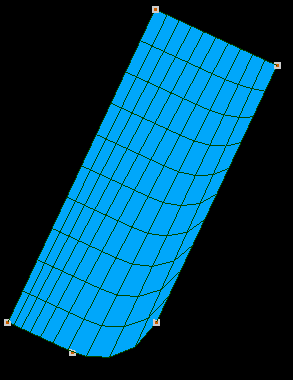
hello @cbourcier ,
another sort of ‘partial solution’ is to add an extra vertex to the face and this makes the heuristics of quadrangle meshing work:
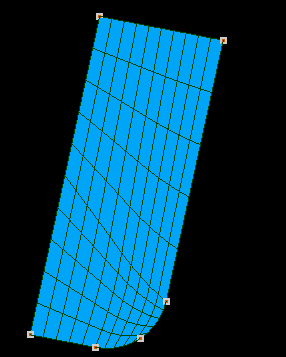
and by playing on the number of elements (one gets a great quad mesh that can fully control):
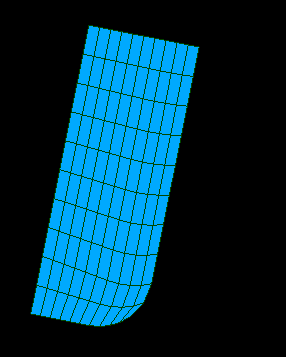
hope the feature request will be take into account 

